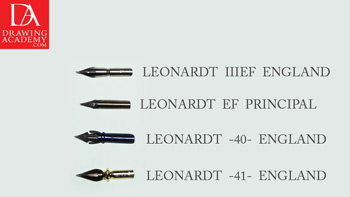Discover How to Draw in Ink
Video Lesson Description
In this video part you will discover How to Draw in Ink using some additional pen and ink hatching techniques.
How to Draw in Ink using various Hatching Techniques
we continue the “How to Draw in Ink” video lesson. The same short dashed method can be done in a different direction, this time I do it diagonally.
When it comes to the “How to Draw in Ink” subject, it is important to have a wide variety of different ink hatching techniques at your disposal. Long curved lines are used for the following method. Such lines form an appearance of a cylindrical object surface.
When you think how-to-sketch-in-ink”>how to draw in ink using organic-looking lines, the following hatching method is produced with groups of curved lines. The groups are made of concave and convex lines. Lines ends overlap neighbouring groups. The area of the drawing, rendered with this method, will have a braided appearance.
When you think how to draw in ink using intricate mesh of lines, you can go for a waved-in, small zigzagged, vertical lines with varied pressure. Each line starts with more pen pressure than which it ends; this makes the pattern change its tone to the lighter value at the bottom.
The marks produced in this method seem to waver. Although it is just one continuous line, it changes direction to such an extent that the tone seems to be made more of a grainy texture than a line.
The following hatching method is quite laborious; however, it can be used when you are not in rush and think how to draw in ink precisely. This hatching method is made of hundreds of small dots rather than lines. The size of the dots and the distance between them influence the tonal value. This method takes time and requires a bit of patience to produce it.
The next hatching method is made of a series of short, cross-hatched lines. Pen pressure, direction of lines and the distance between them generate the gamut and tone of this hatching method.
Short vertical dashes is another variation of the longer diagonal dashes grouped together.
Another method of applying short horizontal dashes forms vertical columns.
A very similar hatching method may be done with vertical dashes arranged in horizontal rows.
The following hatching method has a wandering quality in the lines. It generates a nice looking decorative effect.
The next patch of rendering is done by numerous small circles or bubbles. It has a granular appearance and is similar to rendering in dots. The shape and size of the small circles are not uniform, they differ in shape and pen pressure as well.
The following square of rendering pattern is formed by very short horizontal dashes placed far apart from each other.
When you’re considering how to draw in ink like the Old Masters, there’s one particular style of line was one I saw on the Albrecht Dürer’s etching that was temporary exhibited in the National Gallery, in London. Such line starts with a long stroke which then breaks into a series of dashes, where every next dash is shorter the previous one, until it becomes a dot and disappears completely.
The following hatching method has a check pattern with vertical and horizontal lines arranged in small squares.
The next hatching is rendered in curved lines slowly assembled inside a square like a segment of tree-trunk circles.
The wandering quality of the line in this hatching method has a similar style to one I have done previously. However this time, the direction of the line is changed so it forms a pattern with a diagonal curvature. It has a decorative appearance with elements of organised chaos.
The following rendering method features zigzagged vertical and horizontal lines that cross-hatch at a right angle. The result is a deep-toned mesh with a textured look.
- Receive 15 new videos monthly (45 in total)
- Incredible discount – $4,164
- Bonuses - Fine Art eBooks and Videos
- Drawing Academy Diploma of Excellence after course completion in 3 months
- Personal coaching by Drawing Academy Tutors
- Lifetime membership. Free after the 3rd month
- Immediate access to all 45 video lessons
- Incredible discount – $4,198
- Bonuses - Fine Art eBooks and Videos
- Drawing Academy Diploma of Excellence after course completion in 3 months
- Personal coaching by Drawing Academy Tutors
- Lifetime membership. No more payments



